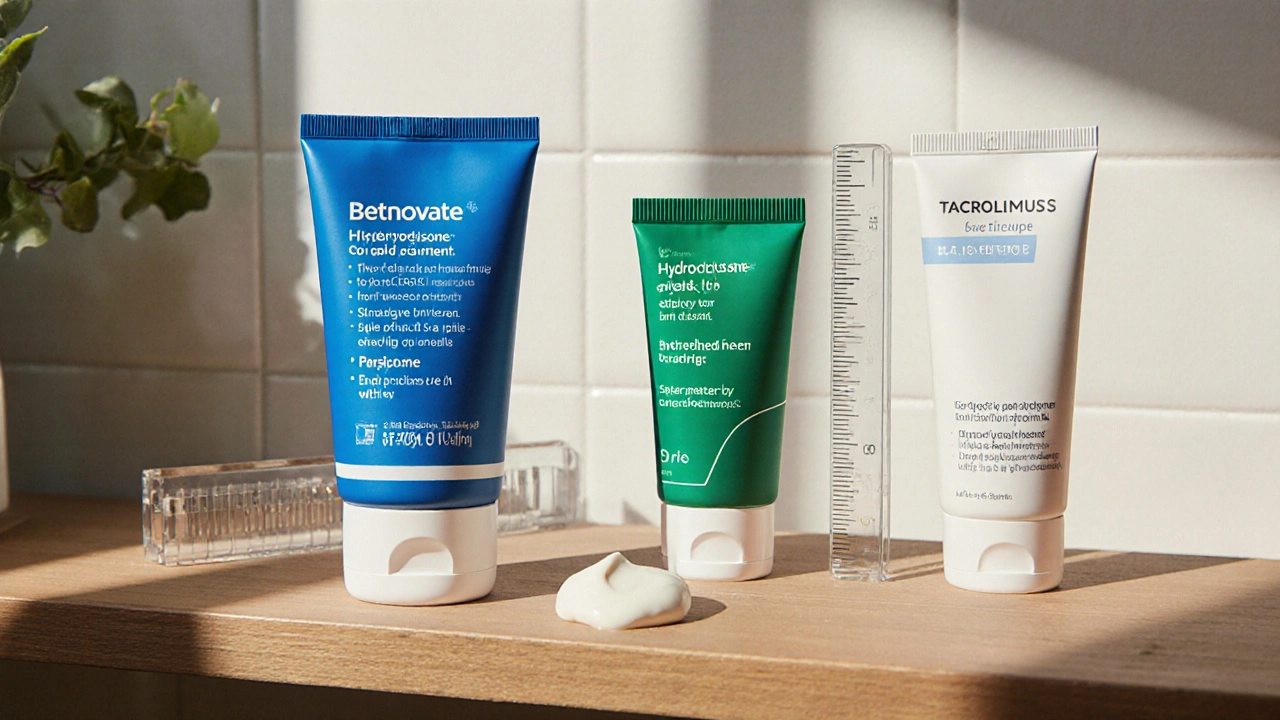
Topical Skin Treatment Advisor
This tool helps you select the most appropriate topical treatment for your skin condition based on key factors discussed in the article. Answer the questions below to receive personalized recommendations.
Recommended Treatment
Quick Takeaways
- Betnovate is a medium‑potency corticosteroid ideal for short‑term flare‑ups of eczema, psoriasis and allergic dermatitis.
- High‑potency options like clobetasol work faster but raise the risk of skin thinning.
- Non‑steroidal creams such as tacrolimus and pimecrolimus avoid steroid‑related side effects but can be pricier.
- Cost, prescription status and the specific skin condition decide which alternative fits best.
- Always follow a doctor’s guidance and taper off steroids when treatment finishes.
When you hear the name Betnovate alternatives, the first thing that comes to mind is a steroid cream that many Australians have used for eczema or psoriasis. But steroids aren’t the only game in town, and picking the right cream depends on potency, safety profile, and how much you’ll pay out‑of‑pocket.
What is Betnovate?
Betnovate is a topical formulation of betamethasone valerate 0.1%, a synthetic glucocorticoid that reduces inflammation, itching and redness on the skin. In Australia it’s classified as a Schedule4 prescription‑only medicine, although some lower‑strength versions can be obtained through the PBS for chronic skin conditions.
How Betnovate Works
Betamethasone binds to glucocorticoid receptors inside skin cells, switching off genes that produce inflammatory cytokines. The result is a rapid decline in swelling and a calmer itch response. Because it’s a medium‑potency steroid, it provides a balance between fast relief and a lower chance of skin atrophy compared with ultra‑high‑potency steroids.
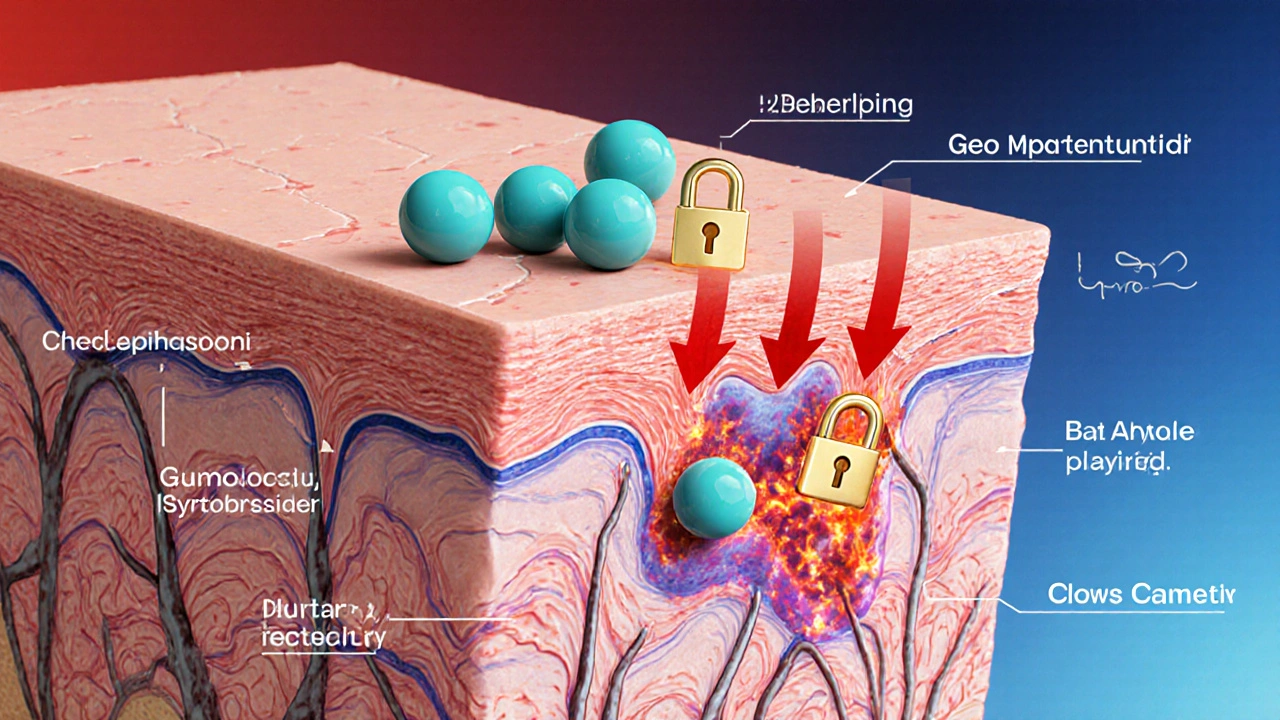
When to Use Betnovate
Typical indications include:
- Eczema (atopic dermatitis) flare‑ups that haven’t responded to emollients.
- Psoriasis plaques on the scalp, elbows or knees.
- Contact dermatitis from allergens or irritants.
Doctors usually advise a short course-often 1‑2weeks-followed by a tapering schedule to avoid rebound inflammation.
Risks & Side Effects
The most common concerns are skin thinning (atrophy), stretch‑marks (striae), and temporary discoloration. Rare but serious issues include adrenal suppression if large surface areas are treated for longer than recommended, and secondary infections like impetigo.
People with diabetes, viral skin infections (herpes simplex) or a history of eczema herpeticum should discuss alternatives with their clinician.
Alternatives to Betnovate
Below are the most frequently considered substitutes, grouped by mechanism.
Other Topical Corticosteroids
These work the same way as Betnovate but vary in strength.
- Hydrocortisone - a low‑potency steroid (0.5%-1%) ideal for mild eczema or facial rash.
- Clobetasol propionate - a very high‑potency steroid (0.05%) used for thick plaques of psoriasis or stubborn hand eczema.
- Mometasone furoate - a medium‑high potency (0.1%) that sits between Betnovate and clobetasol in strength.
Non‑Steroidal Immunomodulators
These calm the immune response without the classic steroid side‑effects.
- Tacrolimus ointment - a calcineurin inhibitor 0.1% (for adults) or 0.03% (for children) used for sensitive areas like the face or intertriginous zones.
- Pimecrolimus cream - another calcineurin inhibitor 1% marketed for atopic dermatitis, especially in children.
Vitamin D Analogues & Combination Therapies
Often paired with steroids for psoriasis.
- Calcipotriene - a synthetic vitamin D analogue that slows skin cell growth; usually combined with a mild steroid.

Side‑by‑Side Comparison
| Attribute | Betnovate (Betamethasone) | Hydrocortisone 1% | Clobetasol propionate | Tacrolimus 0.1% | Pimecrolimus 1% |
|---|---|---|---|---|---|
| Potency | Medium | Low | Very high | Non‑steroid (moderate immunosuppression) | Non‑steroid (moderate immunosuppression) |
| Prescription status (2025) | Schedule4 (prescription) | OTC (low‑strength) / Schedule4 (higher) | Schedule4 | Schedule4 | Schedule4 |
| Typical use | Eczema, psoriasis, dermatitis | Mild eczema, facial rash | Severe psoriasis, thick hand eczema | Facial or intertriginous eczema, steroid‑phobia patients | Childhood atopic dermatitis, sensitive skin |
| Skin‑thinning risk | Moderate (short‑term) | Low | High (long‑term) | Very low | Very low |
| Average cost (AU$ per tube) | ~$22 (PBS subsidised) | ~$8 (OTC) | ~$45 (PBS not subsidised) | ~$60 (private) | ~$55 (private) |
How to Choose the Right Option
Consider these three decision pillars:
- Severity and location. Thin skin on the face or folds tolerates low‑potency or non‑steroidal agents better. Thick plaque psoriasis on elbows typically needs a stronger steroid.
- Duration of therapy. If you need a month‑long plan, a low‑potency steroid or calcineurin inhibitor reduces cumulative side‑effects.
- Cost & accessibility. PBS‑listed products like Betnovate or hydrocortisone are cheaper for most patients, while tacrolimus and pimecrolimus require private insurance or out‑of‑pocket payment.
In practice, many dermatologists start with a short course of Betnovate for rapid control, then switch to a milder steroid or a calcineurin inhibitor for maintenance.
Safe Application Tips
- Wash hands before and after applying the cream.
- Use a thin layer - roughly the size of a pea for each affected area.
- Avoid covering treated skin with occlusive dressings unless a doctor advises it.
- Do not apply on broken skin, open wounds, or fungal infections.
- If symptoms persist beyond the prescribed period, contact your prescriber; don’t double the dose.
Frequently Asked Questions
Can I use Betnovate on my face?
Betnovate is a medium‑potency steroid, so it’s usually reserved for body areas. For facial eczema, doctors often recommend a low‑potency steroid like hydrocortisone or a non‑steroidal option such as tacrolimus to minimise skin thinning.
Is Betnovate available over the counter in Australia?
No. Betnovate 0.1% is a Schedule4 medicine, which means you need a prescription from a GP or dermatologist. Some lower‑strength hydrocortisones are OTC.
How long should I stay on Betnovate?
Most clinicians advise 1‑2weeks for acute flare‑ups, followed by a tapering schedule (e.g., every other day for a week) to avoid rebound inflammation.
What are the main advantages of tacrolimus over Betnovate?
Tacrolimus does not cause skin thinning, making it safer for long‑term use on the face, neck and skin folds. It’s also useful for patients who have steroid‑phobia or who develop steroid‑induced side effects. The trade‑off is higher cost and a possible temporary burning sensation.
When should I switch from Betnovate to a milder cream?
If the rash improves significantly after 5‑7days, it’s a good time to step down to a low‑potency steroid or a calcineurin inhibitor for maintenance. This reduces cumulative steroid exposure while keeping the skin calm.
Are there any drug interactions with Betnovate?
Topical betamethasone has minimal systemic absorption, so interactions are rare. However, using it with other potent topical steroids on large body areas can increase the risk of adrenal suppression.
Choosing the right cream isn’t a one‑size‑fits‑all decision. By weighing potency, location, treatment length, and cost, you can find a safe, effective alternative to Betnovate that matches your skin’s needs.
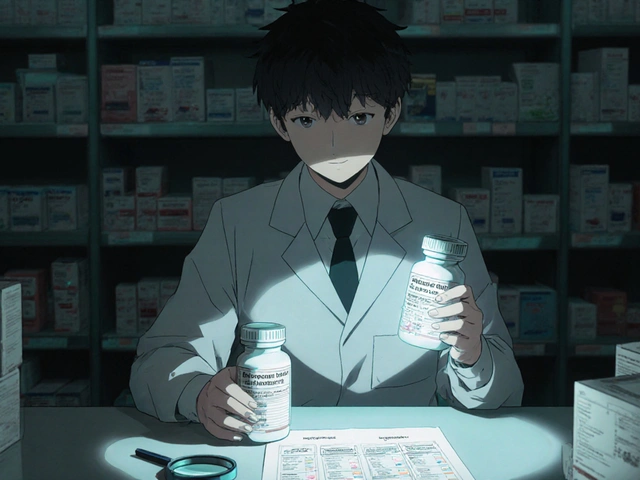

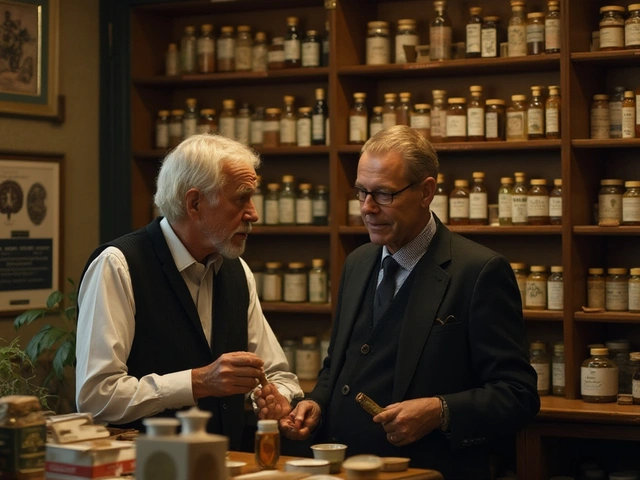
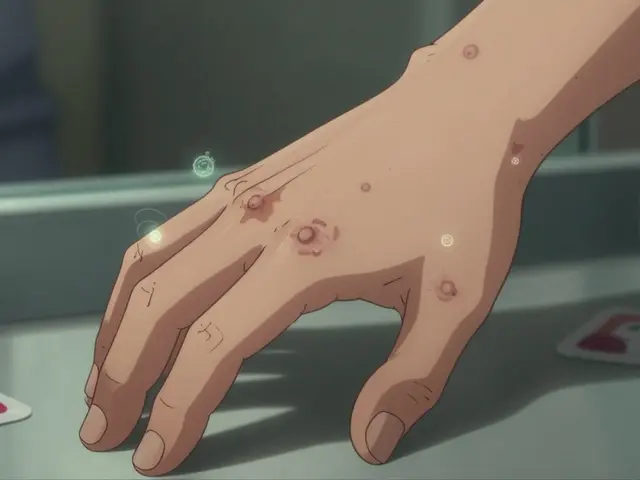

Sheila Hood
October 14, 2025 AT 14:06The article does a decent job of laying out where Betnovate sits among topical steroids.
It rightly points out that the 0.1% betamethasone valerate is a medium‑potency option, which makes it a go‑to for many flare‑ups that haven’t responded to lower‑strength creams.
Because it’s prescription‑only in Australia, you’ll usually see it after a GP has documented that over‑the‑counter hydrocortisone wasn’t enough.
The risk profile sits between low‑potency hydrocortisone and the high‑potency clobetasol, meaning you get decent anti‑inflammatory power without the immediate red‑flag of severe skin atrophy.
However, "moderate" doesn’t mean "harmless" – prolonged use on large body surface areas can still suppress the adrenal axis.
That’s why the guidelines suggest a 1‑2 week course followed by a taper, especially on thicker skin like elbows or knees.
For facial or intertriginous zones the article wisely recommends staying away from Betnovate in favor of low‑potency steroids or calcineurin inhibitors.
The cost breakdown is useful: PBS subsidised at roughly $22 per tube makes it affordable compared with private‑pay tacrolimus.
Still, patients with limited insurance may find the out‑of‑pocket price a bit steep for chronic use.
The comparison table nicely visualises potency, prescription status and average price side‑by‑side.
One thing the piece could improve is a clearer note on how to transition from Betnovate to a maintenance therapy; many clinicians simply switch to a milder steroid or a non‑steroidal agent after the flare subsides.
Also, the “risk of skin thinning” column should stress that the risk is cumulative and highly dependent on application frequency and occlusion.
In practice I’ve seen dermatologists start with Betnovate for a rapid knock‑down, then hand over to pimecrolimus for long‑term control on the face.
The article’s FAQ section covers the most common concerns, but it could mention that patients with diabetes should monitor blood glucose if large areas are treated.
Overall, the guide is thorough, balanced and backs up its claims with a sensible cost‑benefit analysis – just watch out for the usual steroid caveats.
Melissa Jansson
October 22, 2025 AT 02:39Ah, the classic “medium‑potency” glorification – as if Betnovate is the Swiss army knife of dermatology. Your prose glosses over the fact that “moderate” potency still triggers iatrogenic atrophy if you’re not monitoring cumulative exposure. Let’s not pretend the pharmacokinetic tail of betamethasone valerate is negligible when you slather it under an occlusive dressing. In reality, clinicians should wield it like a scalpel, not a butter knife. The article’s risk matrix feels more like a marketing brochure than a hard‑core clinical decision tool.
Max Rogers
October 29, 2025 AT 14:12Great summary! Just a quick note: when you mention “PBS subsidised,” it’s helpful to clarify that this only applies to Australian residents with a valid Medicare card. Also, spelling “betamethasone” consistently throughout the piece avoids confusion. Keep up the solid work.
Louie Hadley
November 6, 2025 AT 02:46I appreciate the effort to map out both steroid and non‑steroid options. It’s important for patients to see that there isn’t a one‑size‑fits‑all solution and that treatment choice often depends on location, severity and personal preference.
Carys Jones
November 13, 2025 AT 15:19Honestly, it’s irresponsible to present steroids as a “go‑to” without a stern warning about abuse. Too many people think a prescription means free reign, and the long‑term consequences-skin atrophy, systemic effects-are far from trivial. We need to be louder about the ethical duty to educate before we prescribe.
Roxanne Porter
November 21, 2025 AT 03:52The inclusion of a cost comparison table is particularly useful for patients navigating the Australian healthcare system. Providing both PBS‑subsidised and private pricing helps readers make informed decisions based on their financial situation.
Jonathan Mbulakey
November 28, 2025 AT 16:26When we talk about skin, we’re really discussing the body’s first line of defense-a barrier that reflects both biology and identity. Choosing the right cream isn’t just a medical decision; it’s a subtle negotiation with how we present ourselves to the world.
Warren Neufeld
December 6, 2025 AT 04:59For anyone dealing with chronic eczema, it can feel like an endless cycle of flare‑ups and patches. Knowing that there are safer, non‑steroidal alternatives like tacrolimus gives a bit of hope that you don’t have to be stuck in that loop.
Hoyt Dawes
December 13, 2025 AT 17:32Oh, please, the “hope” narrative is as worn out as a cardboard box. At the end of the day, you still need a potent steroid to break through the inflammation, and the article barely scratches that surface.